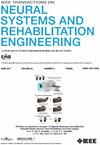Performance of Two Different Targeted Muscle Reinnervation Approaches for Improving Myoelectric Prosthetic Control
IF 4.8
2区 医学
Q2 ENGINEERING, BIOMEDICAL
IEEE Transactions on Neural Systems and Rehabilitation Engineering
Pub Date : 2025-04-08
DOI:10.1109/TNSRE.2025.3558292
引用次数: 0
Abstract
Targeted Muscle Reinnervation (TMR) is a surgical approach that can produce a neural-machine interface to provide additional electromyography (EMG) signals in intuitive control of myoelectric prostheses for high-level limb amputees. Clinically, TMR interface can be built by two types of surgical protocols. The first surgical protocol is to transfer a residual nerve to a denervated targeted muscle using a nerve-to-muscle suture and another is to anastomose a residual nerve to a targeted nerve via a nerve-to-nerve suture. Currently, it still remains unknown which surgical protocol would be more suitable for their clinical applications. In this study, a comparative investigation of the two TMR protocols was conducted by using animals and their performance in reconstructing EMG signals was evaluated. For nerve-to-muscle animal model, the proximal end of ulnar nerve was implanted onto denervated biceps brachii muscle and for nerve-to-nerve model, the proximal end of ulnar nerve was anastomosed to the distal end of musculocutaneous nerve. Post-surgery EMG signals were collected from all the TMR animals. Our results showed that the amplitudes of EMG signals gradually increased for the animals in the two TMR protocols over time, with an obvious difference between nerve-to-muscle and nerve-to-nerve animals. The signal-to-noise ratio and the centroid frequency of EMG signals in nerve-to-muscle animals were notably higher than those in nerve-to-muscle animals. These superior characteristics of the postoperative EMG signals demonstrated that nerve-to-nerve surgical protocol would be better than nerve-to-muscle in reconstructing EMG signals. The findings of this animal study suggest that both the TMR surgical protocols could be useful in providing additional EMG signals for myoelectric control, while the nerve-to-nerve suture would outperform the nerve-to-muscle suture in the quality and the appearance of the reconstructed extra EMG signals.两种不同的定向肌肉神经移植方法改善肌电假肢控制的性能。
靶向肌肉神经再支配(TMR)是一种外科手术方法,可产生神经-机器接口,为高位截肢者直观控制肌电假肢提供额外的肌电图(EMG)信号。在临床上,TMR 接口可通过两种手术方案建立。第一种手术方案是通过神经对肌肉缝合将残余神经转移到失去神经支配的靶肌肉上,另一种是通过神经对神经缝合将残余神经吻合到靶神经上。目前,哪种手术方案更适合临床应用仍是未知数。本研究使用动物对两种 TMR 方案进行了比较研究,并评估了它们在重建肌电信号方面的性能。在神经到肌肉动物模型中,尺神经近端被植入到去神经支配的肱二头肌上;在神经到神经模型中,尺神经近端与肌皮神经远端吻合。我们收集了所有颞下颌关节炎动物手术后的肌电信号。实验结果表明,随着时间的推移,两组所有颞下颌关节动物的肌电图记录振幅都逐渐增大,但神经到肌肉和神经到神经之间存在明显差异。神经对神经肌电信号的信噪比和中心频率明显高于神经对肌肉肌电信号。贴片肌电图的这些优越特性表明,在重建肌电信号方面,神经到神经手术方案优于神经到肌肉手术方案。这项动物研究的结果表明,两种 TMR 手术方案都可以为肌电控制提供额外的 EMG 信号,而神经到神经手术方案在重建额外 EMG 信号的质量和外观方面优于神经到肌肉手术方案。
本文章由计算机程序翻译,如有差异,请以英文原文为准。
求助全文
约1分钟内获得全文
求助全文
来源期刊
CiteScore
8.60
自引率
8.20%
发文量
479
审稿时长
6-12 weeks
期刊介绍:
Rehabilitative and neural aspects of biomedical engineering, including functional electrical stimulation, acoustic dynamics, human performance measurement and analysis, nerve stimulation, electromyography, motor control and stimulation; and hardware and software applications for rehabilitation engineering and assistive devices.

 求助内容:
求助内容: 应助结果提醒方式:
应助结果提醒方式:


